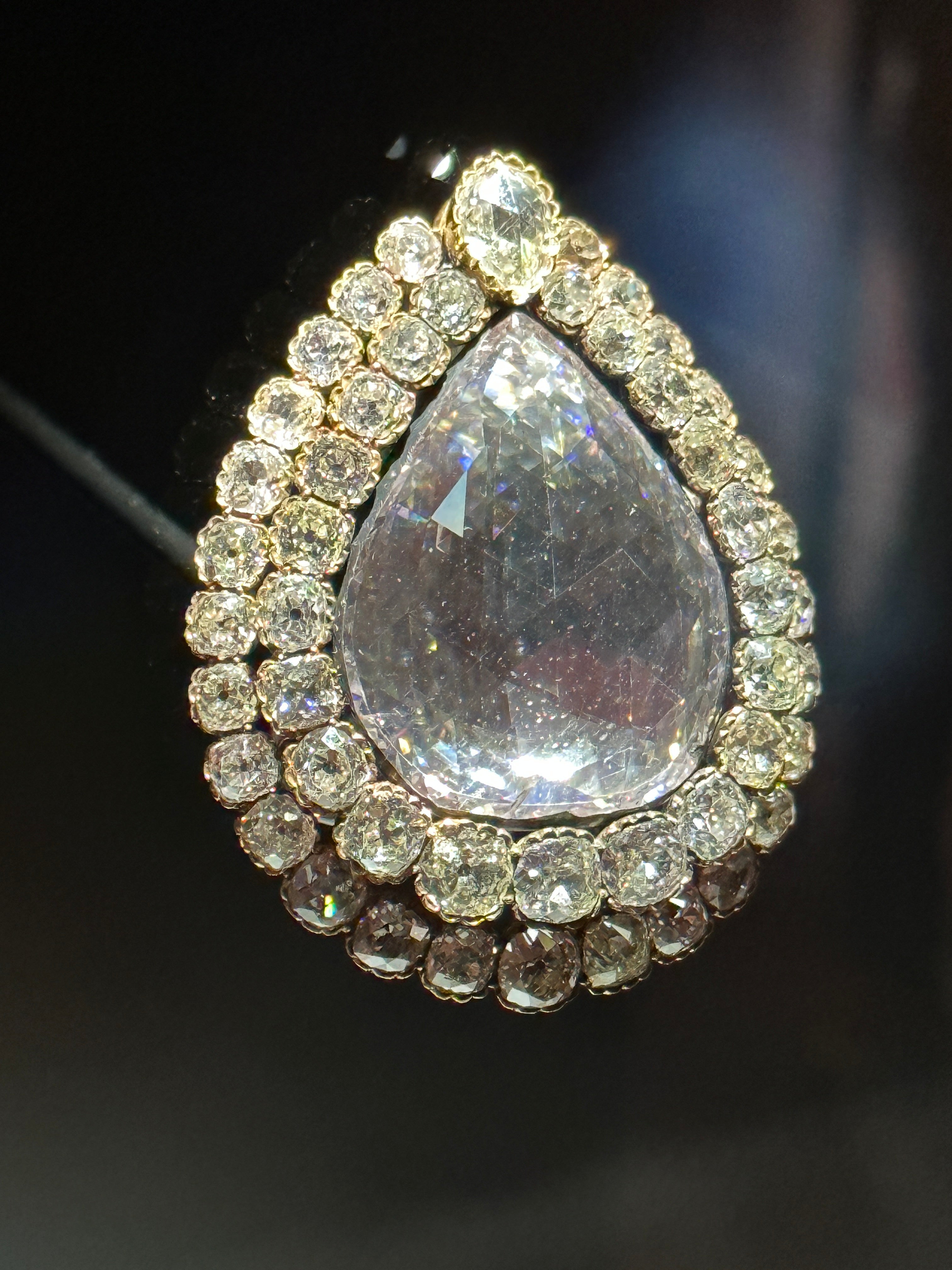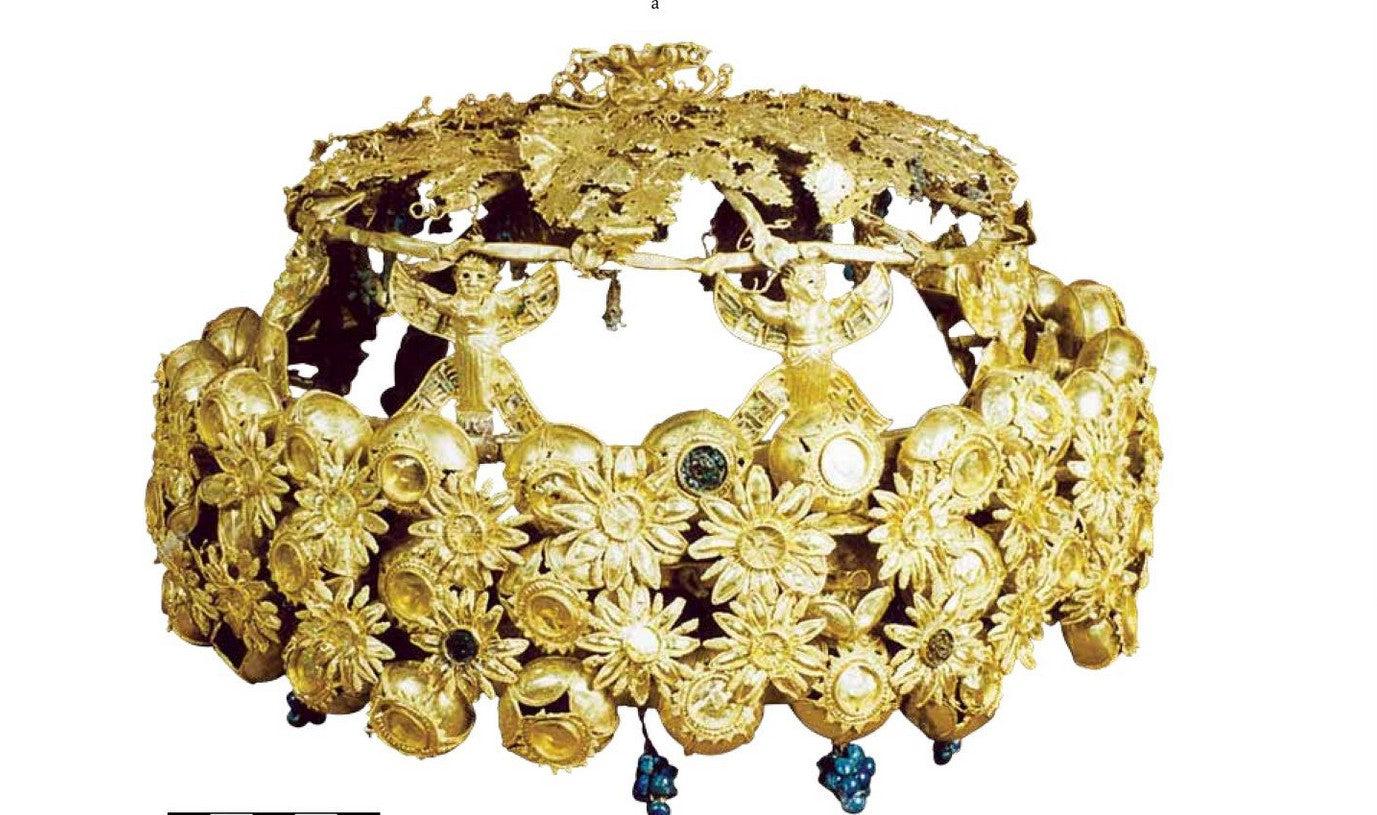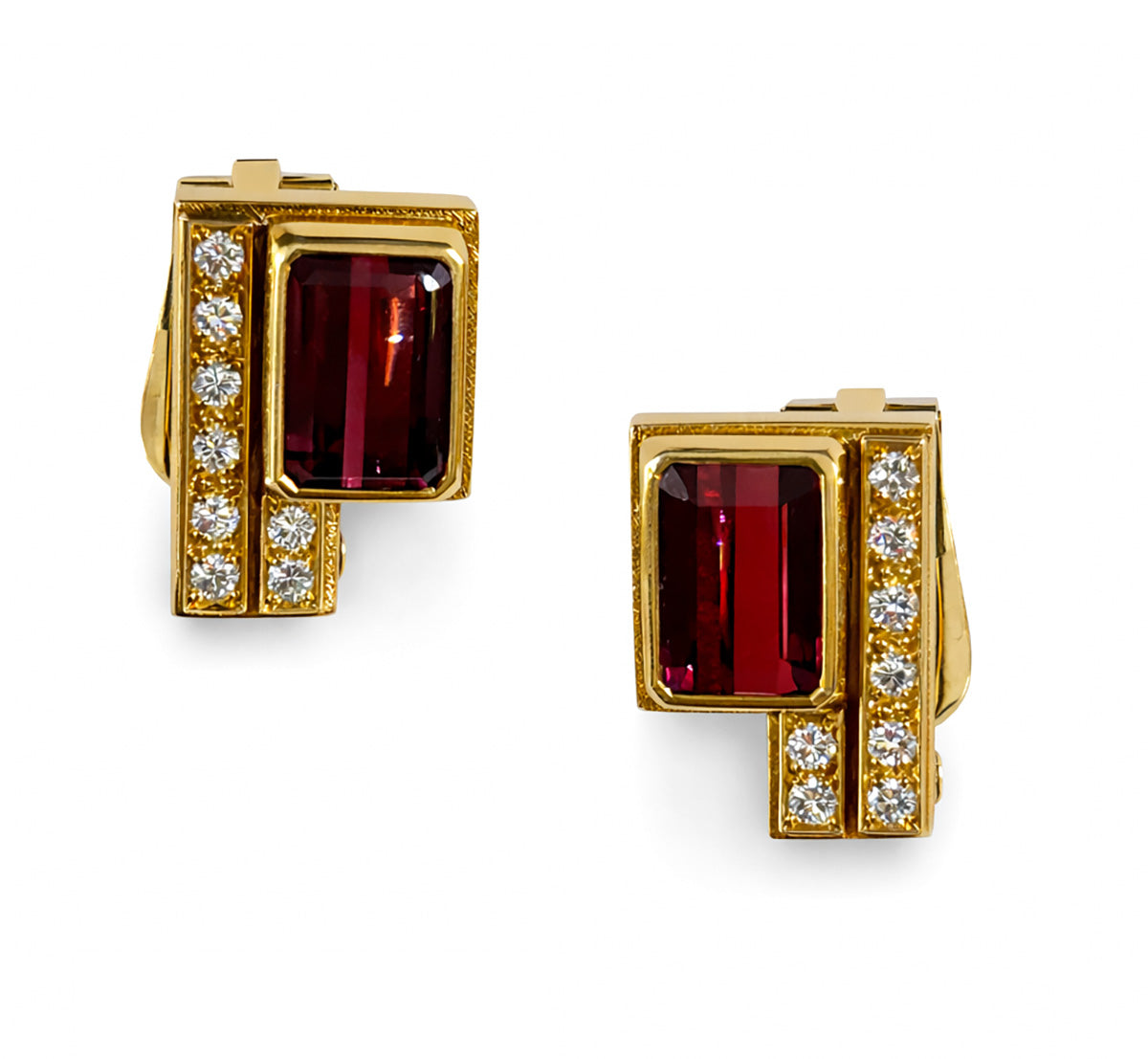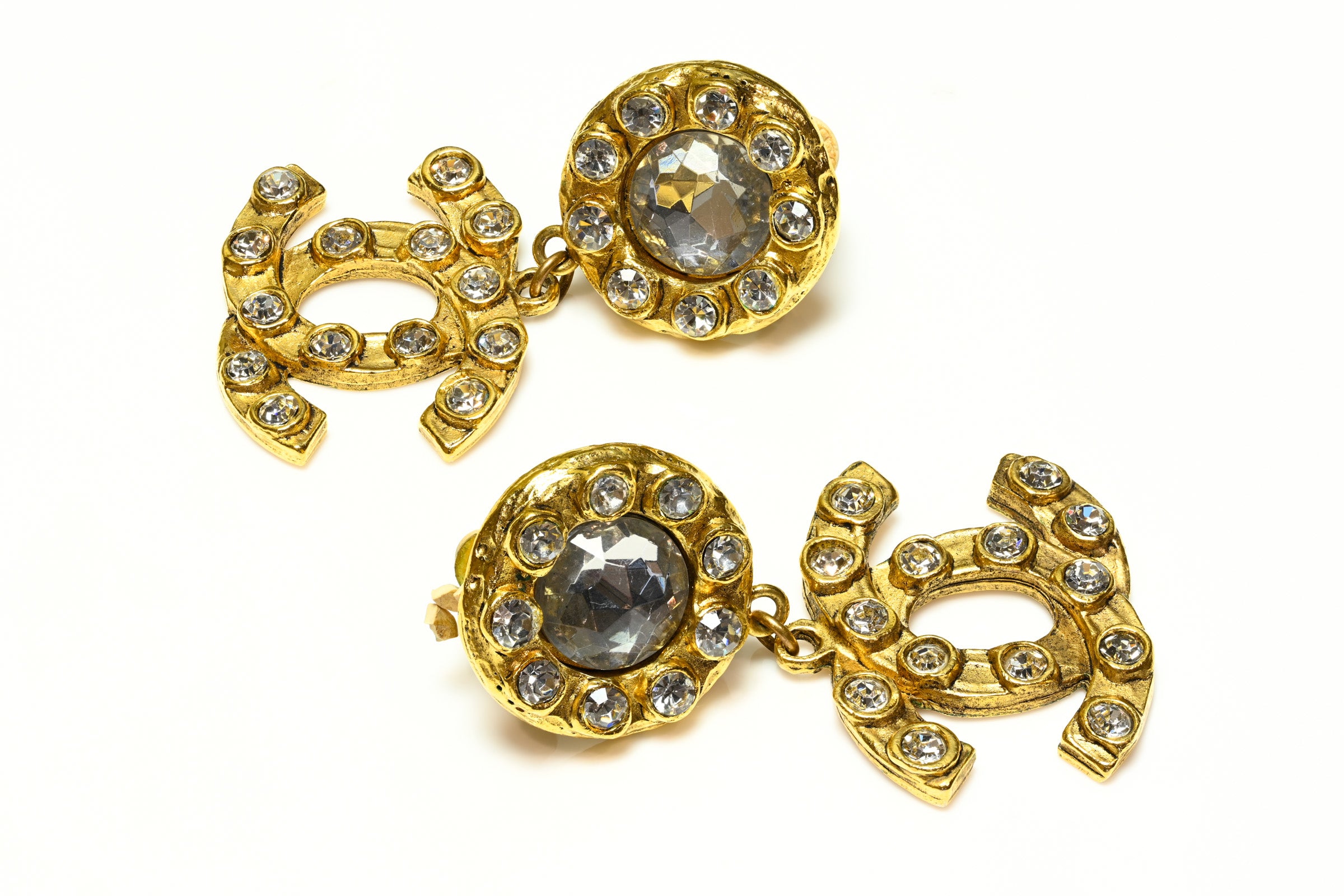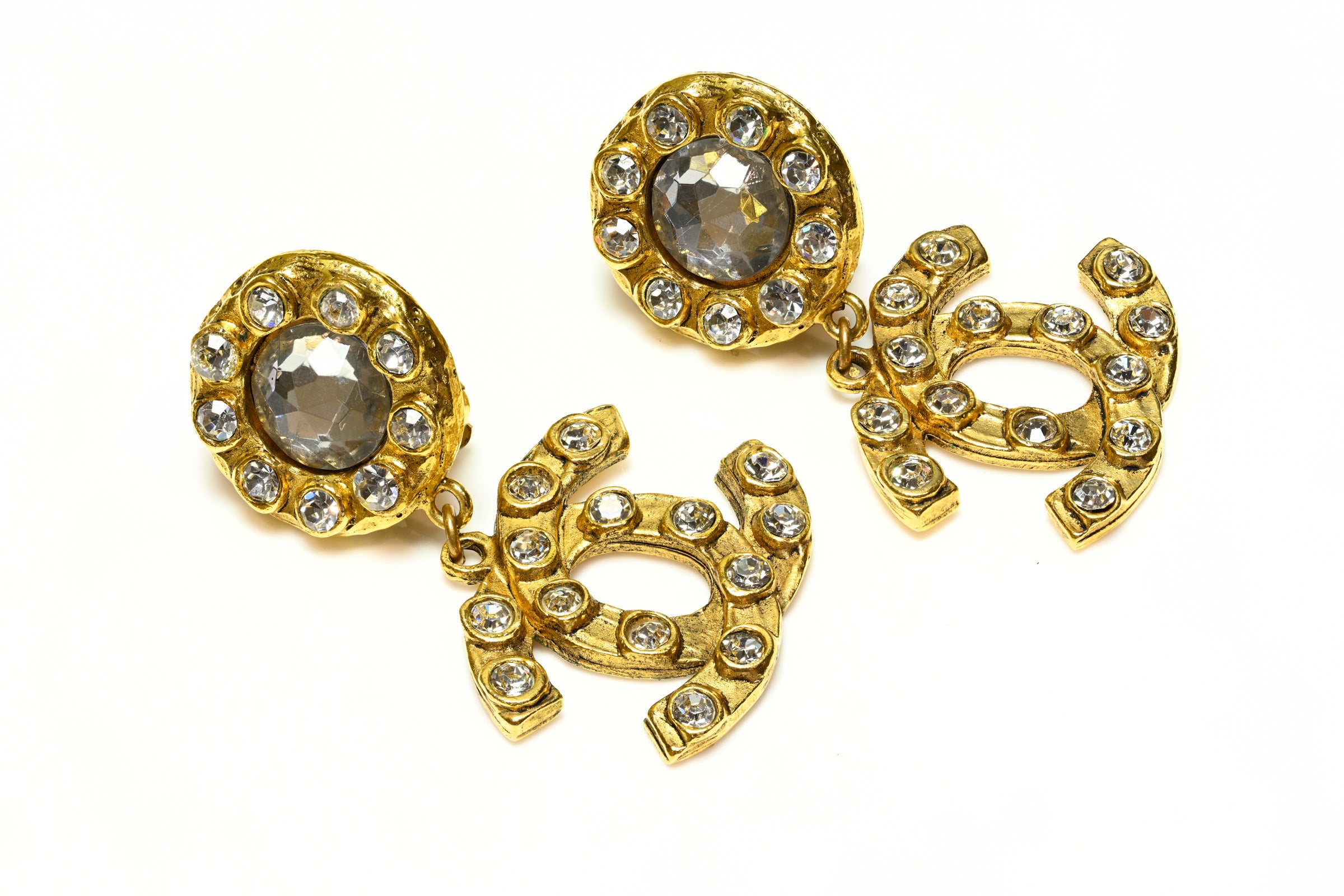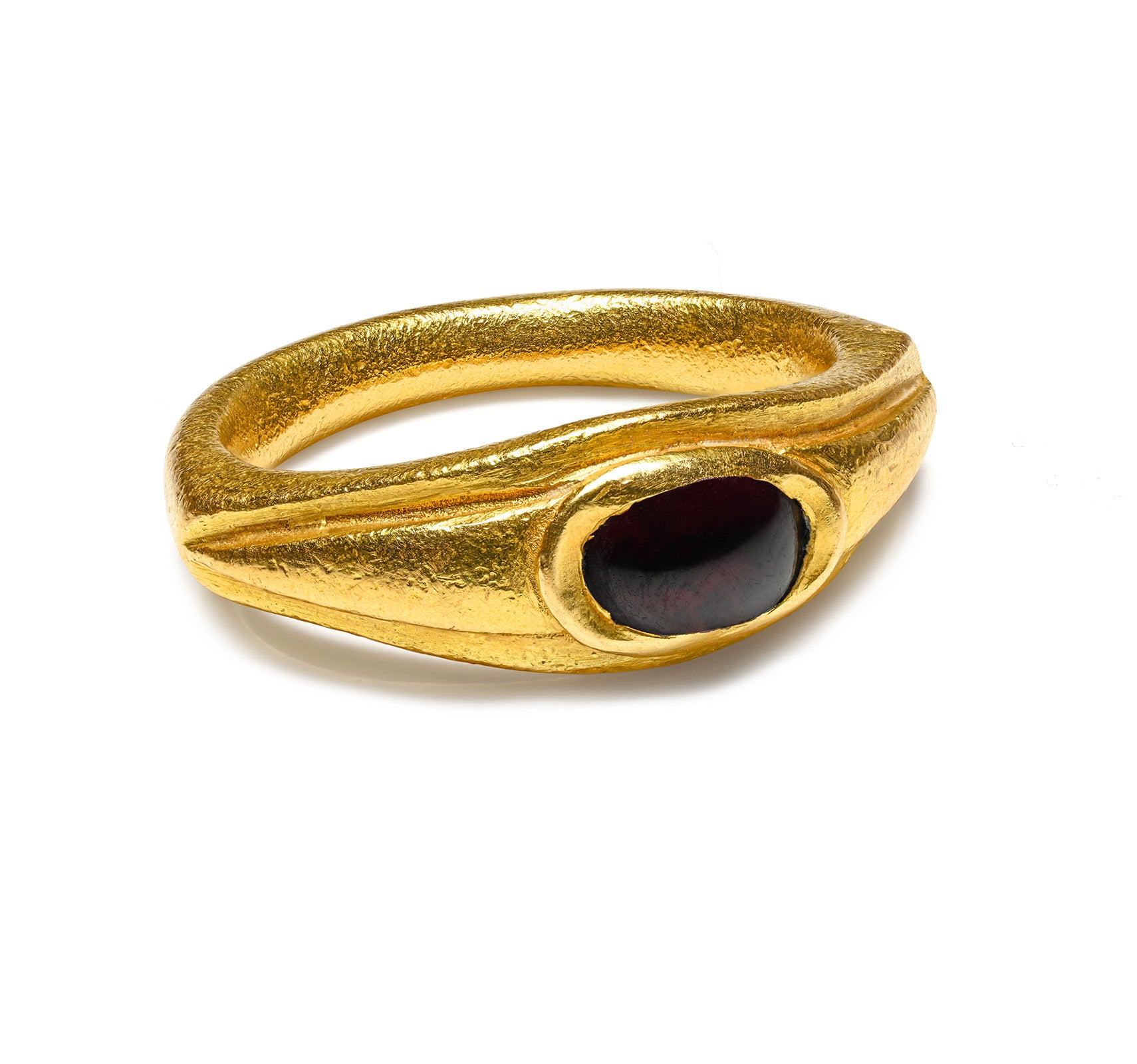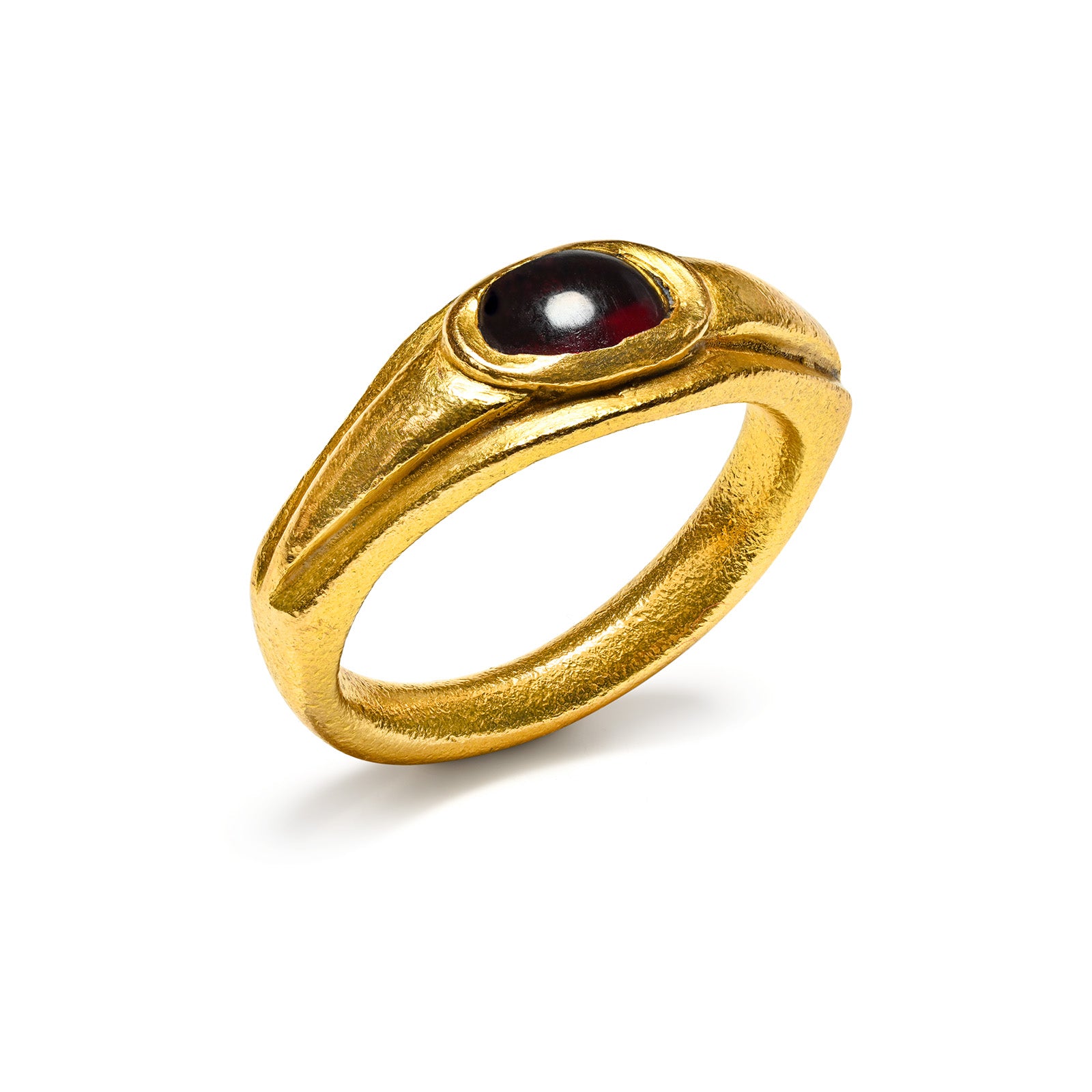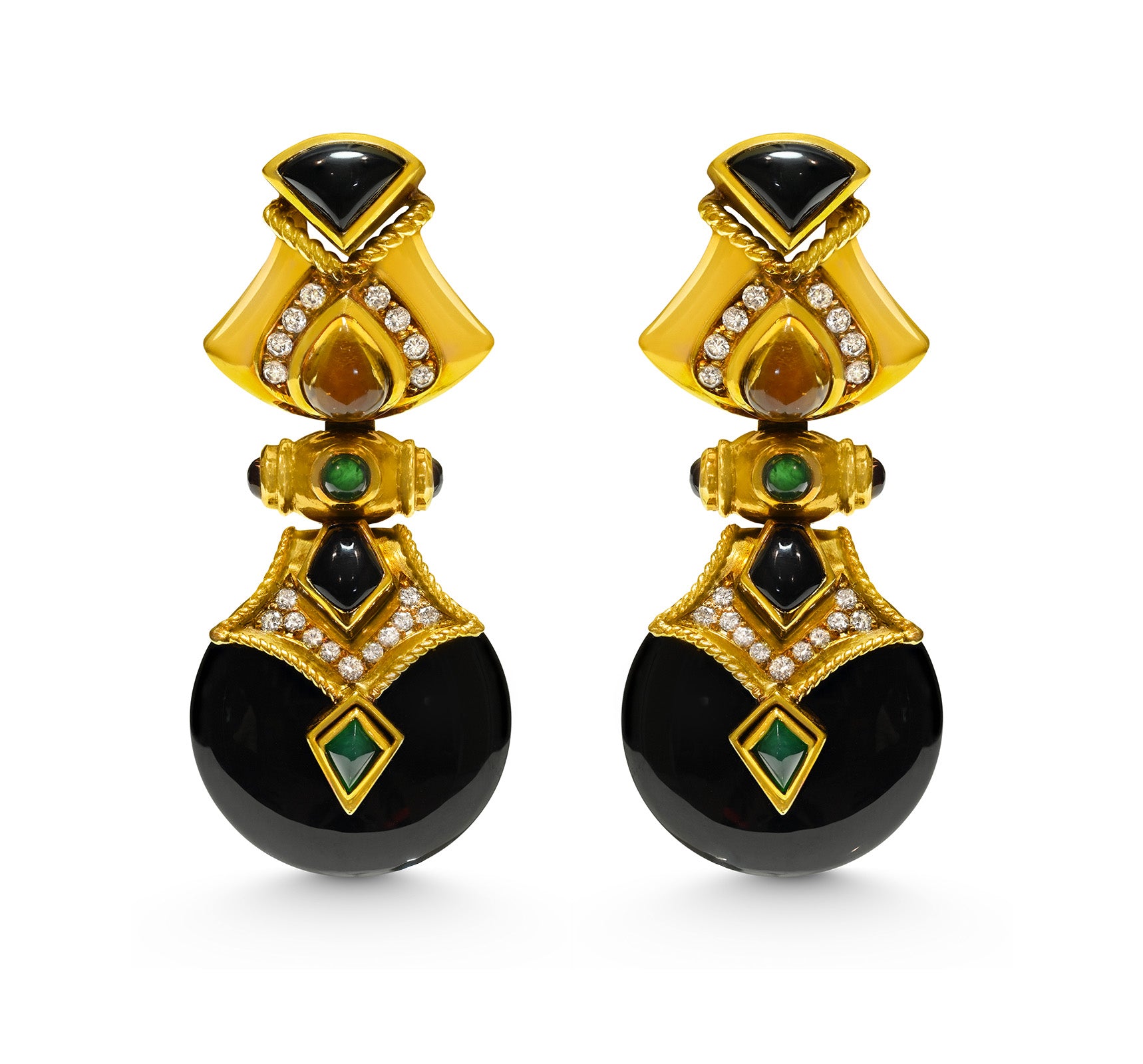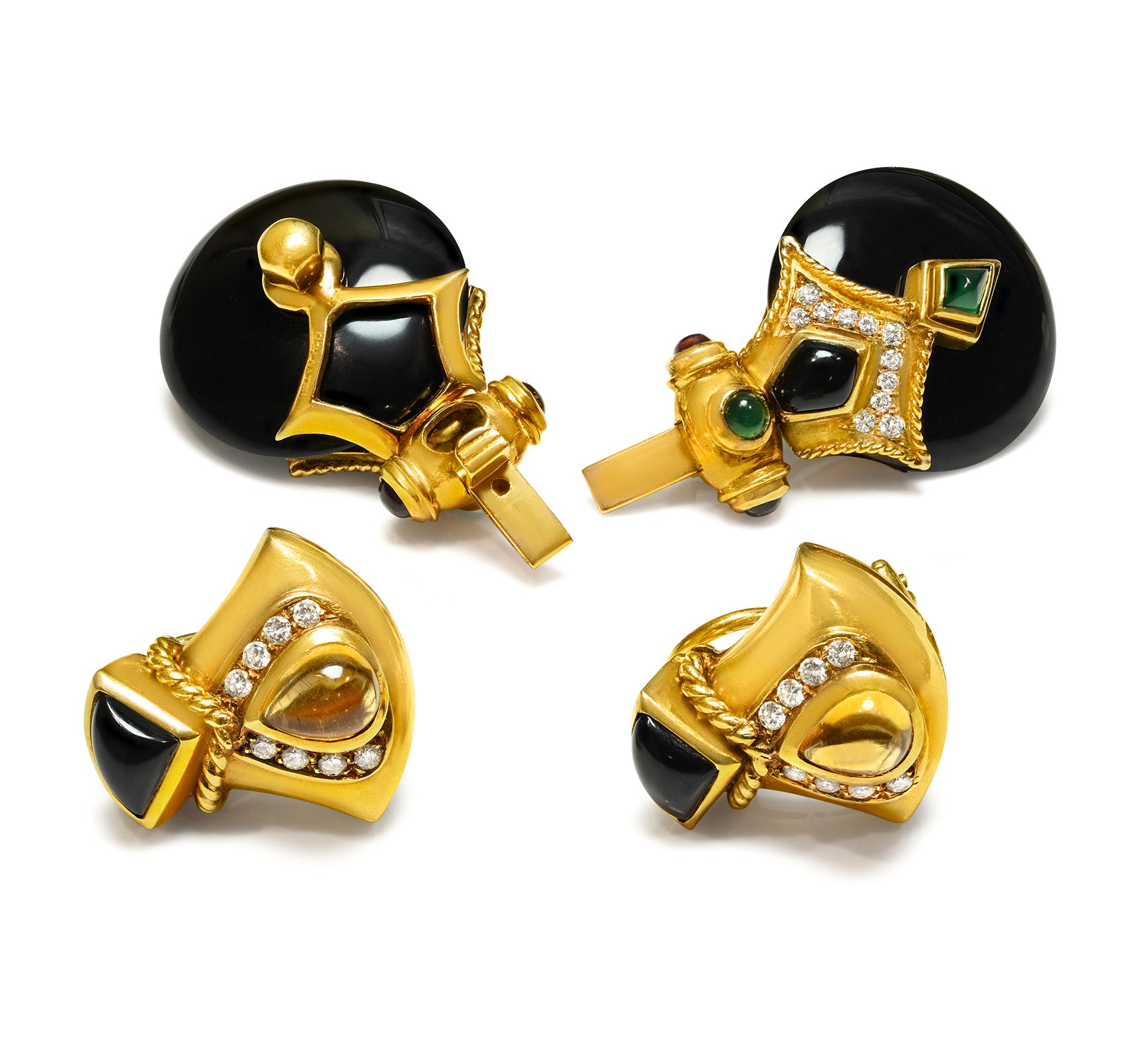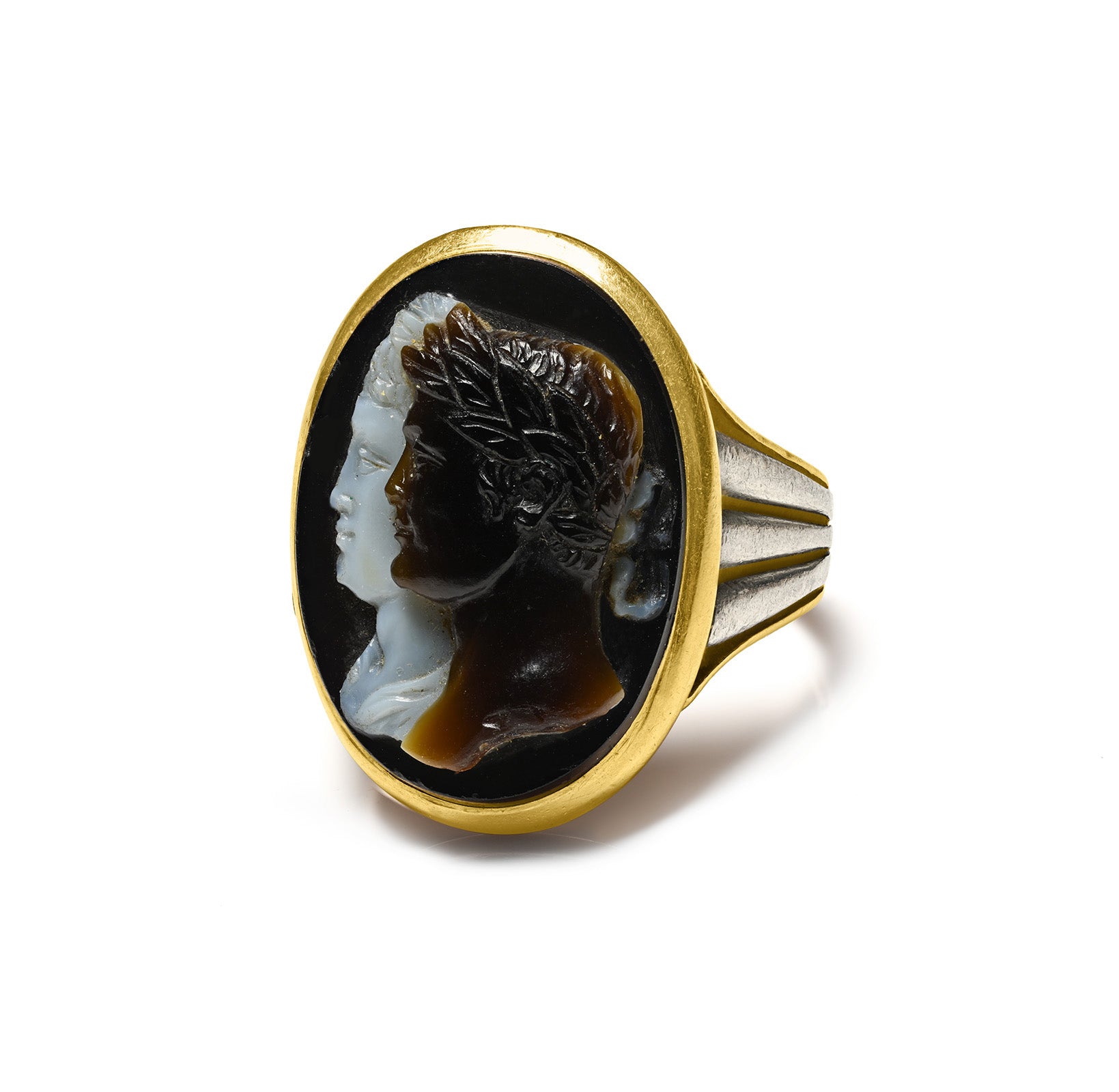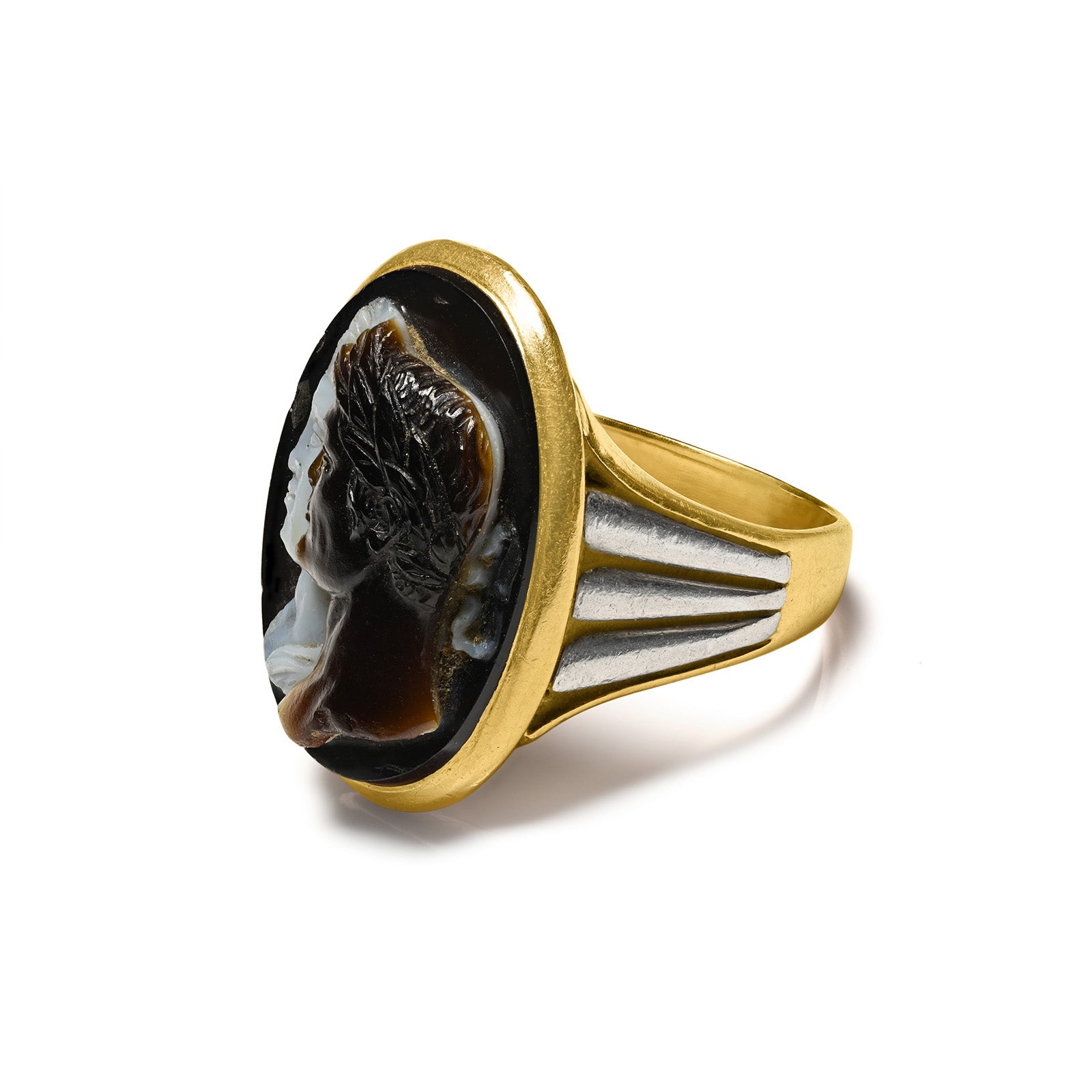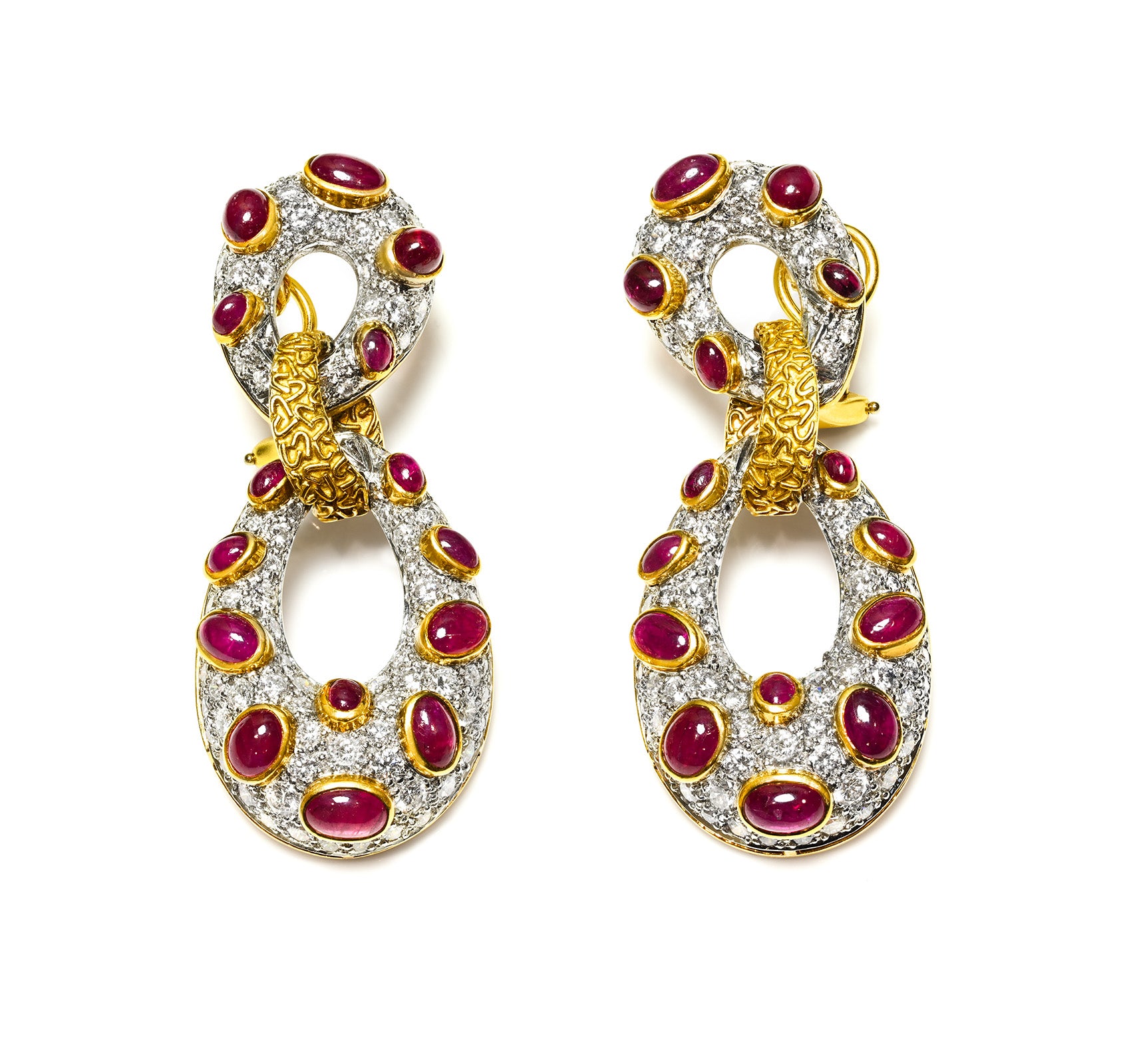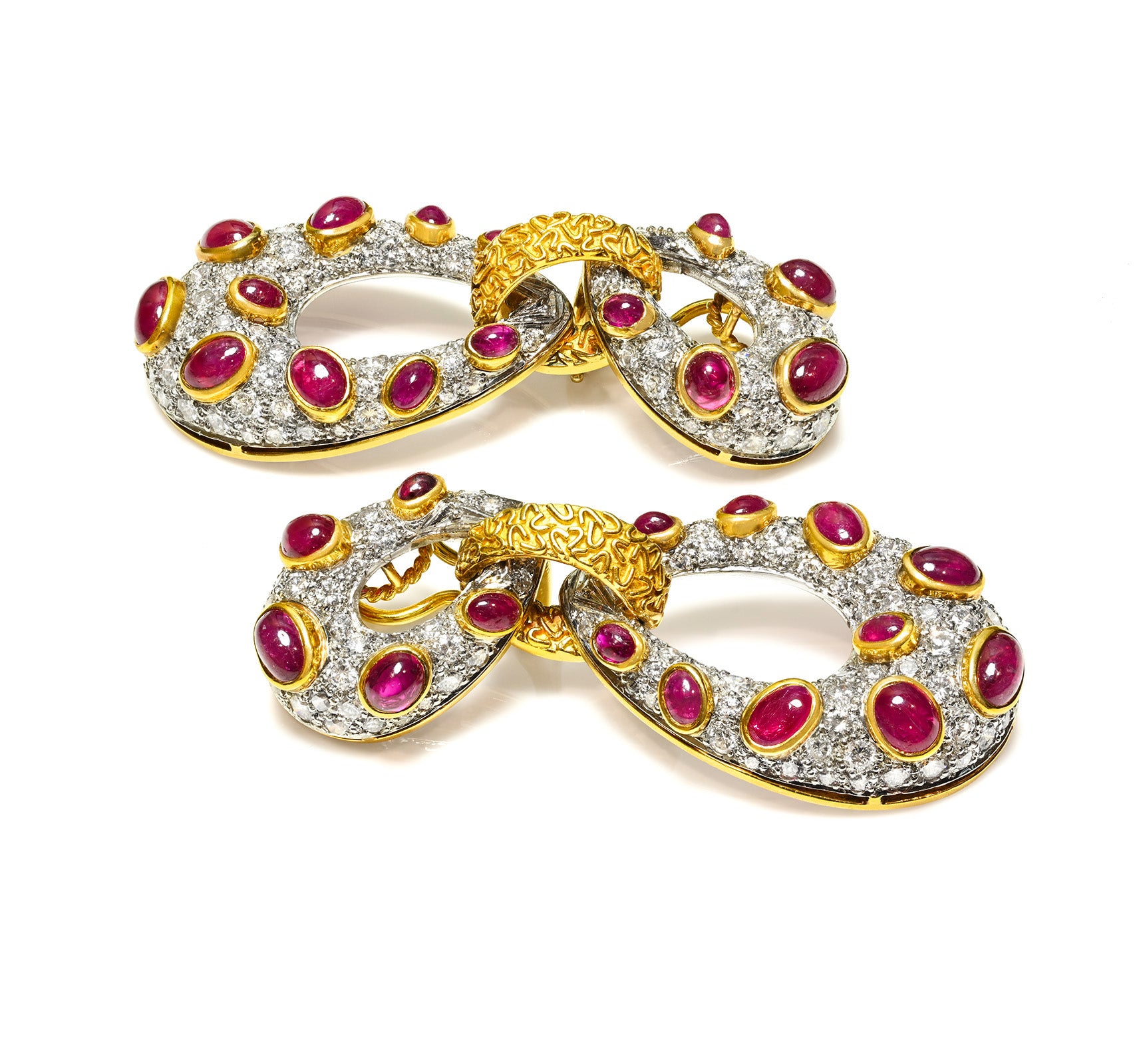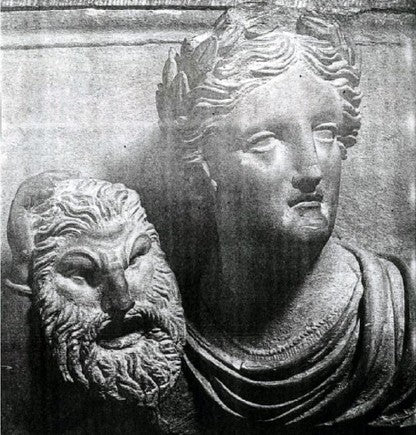
Secrets of the Desert: The Fascinating World of Nabataean Jewels
When discussing ancient jewelry, many fascinating paths lead us to the Nabataean Kingdom—an intriguing civilization located southeast of the Holy Land, known for its rich culture and distinctive artistic heritage.
For the Nabataeans, jewelry was more than just an expression of wealth, beauty, or social status. They firmly believed their adornments held protective powers, shielding them from evil spirits, illness, enemies, and misfortune in daily life.
Exploring ancient cultures frequently reveals a complex blend of historical realities, mysticism, and spiritual beliefs. The Nabataeans exemplify this fascinating blend and have been described by historians as one of the ancient world's "most unjustly forgotten" yet exceptionally gifted peoples.

Nabataean gold earrings via "Jewelry of the Ancient World"Jewelry of the Ancient World
Who Were the Nabataeans?
The Nabataeans were an ancient desert people who inhabited regions spanning the southern Levant and northern Arabia. They controlled vital caravan routes that connected the Eastern world to the Mediterranean region, achieving significant prosperity as Roman trade flourished between these areas.
A crucial caravan stop for the Nabataeans was the settlement of Mampsis. Numerous artifacts, including exquisite jewelry, have been discovered in its ancient cemetery, providing remarkable insights into their daily life and culture.
The region they inhabited, stretching from the Euphrates River to the Red Sea, became known as Nabatene, named after its settlements, including the Nabataean capital city, Raqmu—known today as Petra, in Jordan.

From approximately the fourth to second centuries BC, the Nabataeans emerged as an independent political and cultural entity. Their monarchy thrived upon loosely regulated commerce, bringing great wealth and influence to their society.
According to contemporary Greco-Roman accounts, the Nabataeans were fiercely independent, resisting foreign domination until they were ultimately annexed into the Roman Empire by Emperor Trajan in 106 AD.
Over time, the distinctive Nabataean civilization—known for its intricately decorated pottery and craftsmanship—merged gradually into the broader Greco-Roman cultural world. During the Byzantine period, the Nabataeans adopted Christianity. Interestingly, scholars believe the Nabataean name may derive from the Akkadian word nabatu, meaning "to shine brightly."
Jewelry of the Nabataean Culture
Archaeological evidence shows that Nabataean women were often buried adorned with jewelry—usually two pairs of earrings and occasionally a nose ring, all typically crafted from gold. However, other metals such as iron and silver were also used, especially in bracelet-making.
According to Richard L. Currier's book, Jewelry of the Ancient World, Nabataean men were typically buried with a single coin or pendant placed in their mouths. This practice closely mirrors ancient Greek beliefs, where it was thought that the soul needed to cross the mythical river Styx into the realm of the dead. The legendary ferryman, Charon, would transport souls across this river—but only if he received payment in the form of coins or jewelry.
Richard L. Currier provides a notable example from the Nabataean culture - a large gold disc depicting Venus Aphrodite, the goddess of love, discovered at Mampsis:
"She is shown standing among grains of gold that give the impression of a shrine. Additionally, nine groups of golden grains surround her figure. Two red stones are set on either side, and a gold wreath decorates the disc’s outer edge, from which further bunches of grain hang.
The goddess stands upright, facing forward, nude to the waist, with the lower part of her body wrapped in cloth and her hands raised to her hair.
This representation is typical of the revered goddess of love, greatly worshiped by the ancient Greeks and Romans. Her image frequently appeared in bronze and gold statuettes, as well as in ancient paintings and mosaics. Interestingly, three pendants shaped like dolphins were also discovered in this desert cemetery."
Types of Nabataean Jewelry
Ancient societies created a wide range of jewelry, and the Nabataeans were no exception.
According to the study "Nabataean Jewellery and Accessories" by Eyad Almasri, Firas Alawneh, and Fadi Bala'awi from Hashemite University, Nabataean cultural artifacts reveal diverse jewelry types, including crowns, diadems, earrings, nose rings, necklaces, torques, fibulas, girdles, rings, bracelets, armlets, and anklets.
Crowns
Crowns depicted on Nabataean sculptures came in four distinct forms and symbolized authority and power. One notable example includes a crown adorned with two palm leaves above two horns and a circular disc between them, associated with the goddess Isis.
Another significant design featured two crowns representing the union of Upper and Lower Egypt, often linked to the deity Harpocrates. This form was also commonly used as an amulet in ancient Egyptian culture.
Diadems
Diadems frequently appear on Nabataean coins, particularly over the heads of King Aretas IV and his spouse. Several Nabataean queens, including Huldu, the first wife of Aretas IV, are also depicted wearing diadems.
Earrings
Earrings, crafted in various designs and materials, were common among Nabataean women but not worn by men. Similar earring styles appeared in contemporary Arab kingdoms like Palmyra (modern-day Syria) and Hatra (modern-day Iraq).
Queens Huldu and Shuqaila II, wives of King Aretas IV, are notably depicted on Nabataean coins wearing earrings, one featuring a distinct spiral design.

Gold earring in a shape of a bird, Khirbet edh-Dharih via "Nabataean Jewellery and Accessories"

Copper earring with seashell stone via "Nabataean Jewellery and Accessories"

Drawings of two earrings, Mamshit via "Nabataean Jewellery and Accessories"
Nose Rings
Nose rings have been found at several Nabataean archaeological sites. A gold nose ring was discovered among the city ruins of Avdat (Oboda), while another was found in a tomb at Mampsis (Kurnub), alongside two sets of earrings—one ornate and the other simpler. Both rings are similar in size, design, and craftsmanship. A third nose ring, found in Petra, currently remains in private ownership.

Nose-ring from Avdat (Obada) via "Nabataean Jewellery and Accessories"
Necklaces
Necklaces were more prevalent in other contemporary Arab kingdoms such as Palmyra and Hatra. To date, only one Nabataean necklace, composed of dark blue beads, has been found at Khirbet edh-Dharih.
Most information about Nabataean necklaces comes from sculptures depicting humans, deities, and coins featuring royal figures, due to the rarity of physical finds. Nabataean necklaces traditionally fell into five categories: those with triangular decorations, twisted metal necklaces, pearl or bead pectorals, crescent-shaped designs, and laurel wreaths.

The Great Temple of Petra - Source: Bernard Gagnon via Wikimedia Commons
Torques
Only a single torque—a neck ornament—has been discovered so far in Petra. Made of iron and found in a female grave, it featured a longitudinally grooved stone ball. The design suggests possible Byzantine origins.
Torques were exceptionally rare in Nabataean archaeological contexts, although sculptural depictions of Nabataean gods and goddesses from Khirbet el-Tannur feature them prominently.
These ornate, twisted metal neckpieces often display lion heads touching either side of a central circular element, suggesting potential planetary symbolism.
Fibulas
Fibulas (brooches) were common accessories used by both Nabataean men and women to fasten garments, as they were in contemporary cities like Dura-Europos and Palmyra.
Rings
Surprisingly, rings were rare in Nabataean jewelry and absent from most sculptural depictions. Two ring bezels were uncovered at Khirbet edh-Dharih: one from the Roman era and the other, crafted from garnet, dating back to the Nabataean period. The latter displays an engraving of the winged goddess Nike, symbolizing victory.
This garnet ring provides valuable insight into Nabataean craftsmanship, highlighting the goldsmiths' skill in metalwork, mold-making, and stone inlay. Furthermore, the ring likely served as an amulet, granting protection, luck, and victory to its wearer.

Ring bezel made of garnet, Khirbet edh-Dharih via "Nabataean Jewellery and Accessories"
Bracelets
Bracelets adorned the wrists of Nabataean men, women, children, and even representations of gods and goddesses. Designs ranged from simple bands to intricate, twisted ornaments.
Numerous bracelets crafted from metals like silver and copper have been found in Petra’s tombs, including one delicate bracelet for a child.
Additionally, some bronze bracelets ended in dragon or serpent tails, while a significant cache of gold bracelets was discovered at Khirbet edh-Dharih. The terminals of these bracelets often featured decorative motifs, such as palm leaves or star shapes.
Bracelets also appear frequently on human and divine figures depicted in stone and terracotta.

Two bracelets made of copper via "Nabataean Jewellery and Accessories"
Armlets
Two primary types of armlets appear on Nabataean sculptures. The first is a simple, broad ring with minimal decoration. The second, less common variety, is represented by a chain bracelet worn on the left arm of a winged figure of Nike, depicted holding the Zodiacal sphere.
Similar armlets adorn Nabataean sculptures found in the northern region of their kingdom, particularly around Jabel Druze. Notably, a seated male figure from Qanawat in Syria wears two distinctive armlets on his upper right arm.
Symbolism of Nabataean Jewelry and Accessories
Jewelry was integral to Nabataean society, reflecting both social status and religious beliefs. Piercings for earrings and nose rings were common practices among the Nabataeans and were likely reserved for nobility, royalty, and depictions of their deities.
Nabataean burial practices reveal important insights into their spiritual beliefs about the afterlife. Deceased individuals were often adorned with significant amounts of jewelry, placed intentionally to beautify them in their journey toward immortality.
Archaeological finds, such as an iron torque discovered in a female burial, two gold earrings found next to a skeleton at Petra, and the remains of a woman at Khirbet edh-Dharih adorned with an anklet, bracelet, and a dark blue beaded necklace, provide clear examples of such practices.
These burial rituals strongly suggest that Nabataeans believed jewelry could aid the deceased's transition to the afterlife. Symbols of animals, plants, and celestial imagery frequently adorned Nabataean jewelry, further reflecting the symbolic connection between these adornments and the spiritual beliefs of their culture.

Nabataean silver sculpture, c. 1st c. BC–1st c. AD. (Source: Metropolitan Museum of Art via Wikimedia Commons)
Prehistoric Jewelry Traditions
Before humans mastered metalworking, jewelry was crafted from appealing natural materials easily shaped into beautiful and intriguing designs. Shells, teeth, bones, and pebbles were carefully fashioned into pendants, headpieces, necklaces, and anklets—bracelet-like bead strings worn around the ankles.
In the Holy Land, nomadic tribes began settling into caves and shelters roughly 10,000 years ago. Archaeological evidence shows that these early inhabitants buried their deceased beneath their dwellings, adorning the bodies with jewelry.
One notable example is the discovery of a body adorned with seven rows of shell beads around the head, and another grave containing a necklace featuring two bone pendants suspended from a string of animal teeth, as documented in Currier's Jewelry of the Ancient World.
Over the next 4,000 years, inhabitants of the Holy Land transitioned from nomadic life to settled communities, cultivating crops and raising livestock. Even after settling into villages, they continued to produce jewelry similar to that worn by their nomadic ancestors.
However, a notable innovation emerged with the introduction of jade beads. Although jade—a semiprecious stone extensively used in ancient China and India—only appeared later in the Holy Land, its appearance marked an intriguing development in local jewelry traditions.
Jade, admired for its beautiful white, gray, or greenish-gray hues and ease of carving, became popular over time. Initially, the region’s inhabitants used stone tools and weapons throughout the prehistoric era. Eventually, they began experimenting with metal, creating simple copper tools and weapons, fundamentally transforming their lifestyles.
With these technological advancements, people began incorporating semiprecious stones into their jewelry. Numerous archaeological discoveries from the desert regions of the Holy Land include beads and pendants from this period. Made from diverse materials such as bone, marble, limestone, hematite, serpentine, carnelian, mother-of-pearl, and other shells, these adornments featured beads in tubular or circular shapes, and trapezoidal or rectangular pendants.
The Nabataeans represent just one of many ancient cultures whose traditions and craftsmanship have inspired generations of jewelers, leaving a lasting legacy on jewelry artistry through the ages.
Cover Photo: High relief bust of Melpomene carrying a mask, Petra via "Nabataean Jewellery and Accessories"

